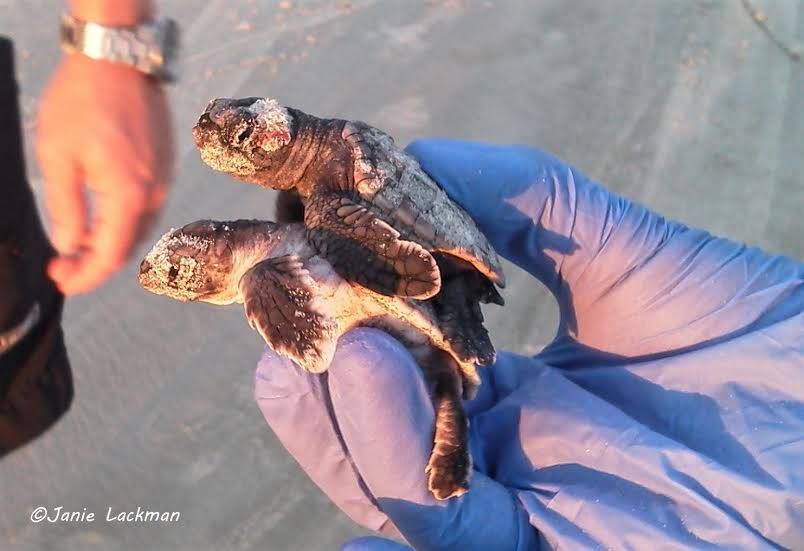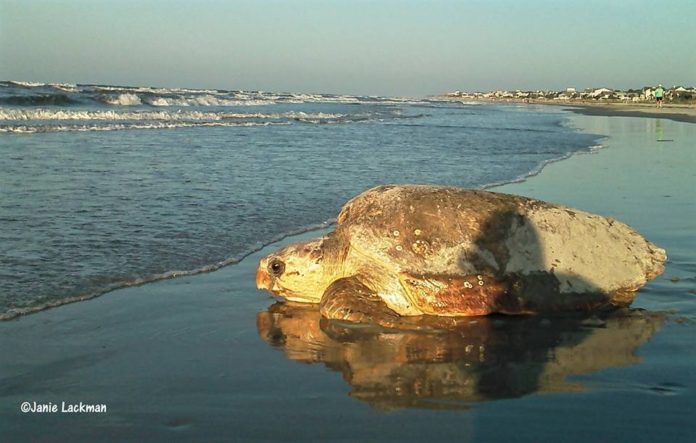Rising temperatures are a crisis in the making for South Carolina’s threatened loggerhead sea turtles, and the crisis might become dire.
According to recent news reports, that’s one of the frightening takeaways from the International Sea Turtle Society’s annual Symposium on Sea Turtle Biology and Conservation held recently in Charleston, SC.
For more than a decade, concern has grown that more loggerhead sea turtle hatchlings are born female than male as the sand temperature rises in a warming climate, disrupting the species balance needed to reproduce.
The focus has now shifted: If the sand gets too hot, the nestlings die or hatch too weak to make it.
“Morbidity,” Marc Girandot, a University of Paris-South ecologist, said of what is now the greater concern. No one has determined what the temperature threshold is, he said, “but we know there is a problem.”
It’s a problem already showing up in Florida and apparently in South Carolina, said David Owens, a biology professor emeritus at College of Charleston, who has studied sea turtles for years.
“In Florida, extreme numbers of females are being produced. And these turtles incubating at the higher temperatures are not as fit. They’re going to be easy prey for predators,” Owens said.
The research here is still underway, but it appears that South Carolina is producing 80 percent females to 20 percent males, he said. When he first began studying the species, the sex difference was about 50-50.
An adult loggerhead is normally a 300-pound, 3-foot-long mammoth that crawls into the dunes each spring to lay eggs in nests that will hatch over the summer. It’s the species that lays nearly all the nests along South Carolina beaches and has become a beloved symbol of the natural coast.
By the end of May, the first nests will be dug.

The loggerhead is one of seven sea turtle species around the world and all of them are considered endangered or threatened. Since they were put on the federal endangered species list, the numbers of Atlantic nesting loggerheads generally were thought to be in a gradual decline.
The turtles’ future has been threatened by fish nets and marine debris, and the destruction of habitat such as nesting dunes.
South Carolina, however, has been a leader in the recovery work, and nesting numbers in the thousands in recent years suggest that loggerhead nesting might have turned the corner on this coast. The turtle is considered a threatened species here, which is a step above endangered.
But the state’s coast sits on the boundary between sub-tropic and temperate climates. No one knows yet what effect climate warming will or is having on its ecology. Researchers agree the coast is particularly vulnerable.
“There’s no ‘silver bullet’ solution to solving the problems. What works today won’t necessarily work tomorrow,” said Jack Frazier, a vertebrate zoologist with the Smithsonian Institute. “We share information and help each other find solutions.”
Girandot organized a workshop on the temperature phenomenon at the symposium, which is a chance for researchers and people in the field worldwide to exchange what they have learned and what they can do about threats.
Wetting down vulnerable nests have been proposed to try to keep a balance between turtle egg sexes or their survival, Girandot said, but it carries its own risks.
The best thing for South Carolina, he said, might be the one already employed by the S.C. Department of Natural Resources and a host of turtle watch groups. The state is considered a model for its success with the volunteer watch. Every developed beach along the coast has a group going out daily to find, secure and protect nests.
Keep at it, Girandot said. Keep as much beach as possible open for nesting. This 300 million-year-old species has handled climate change before.
“They will find a solution by themselves and we must allow them,” he said.










